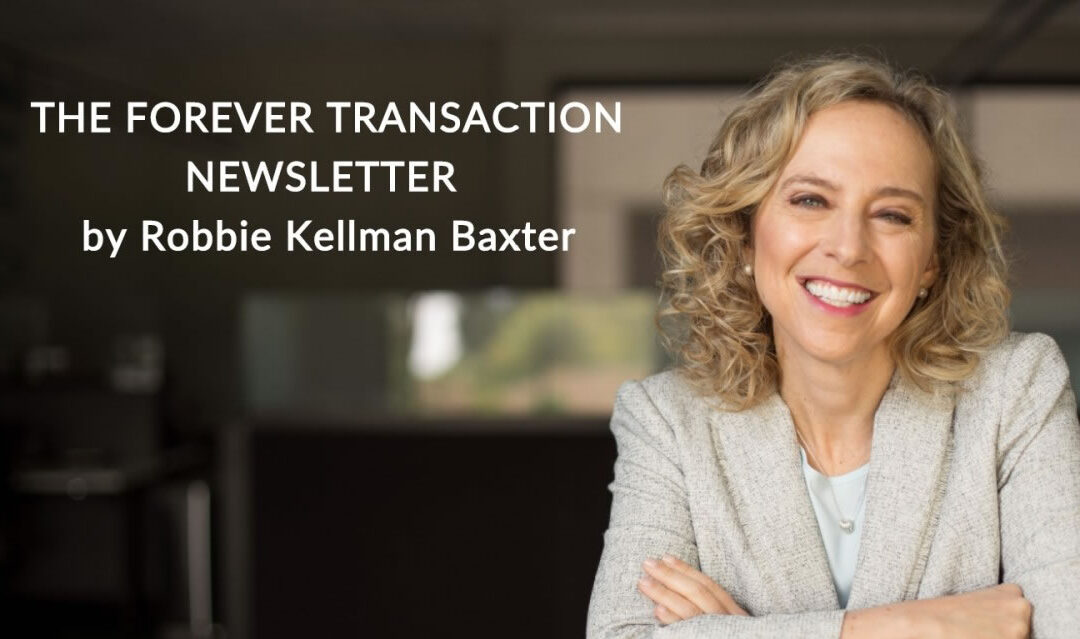Rumors are flying about Apple’s emerging bundling strategy. Apparently they are getting ready to launch several tiers of new bundled subscriptions, incorporating different combos of the following: Apple Music, Apple TV+, Apple Arcade, Apple News+ , iCloud storage and eventually a new Fitness offering.
It makes sense. We’ve already seen the power of Amazon Prime, both as a driver of revenue and as a powerful “habit driver” for all of Amazon’s offerings. I know I joined Amazon Prime several years ago just for the free shipping. Today, that free shipping has motivated me to go to Amazon first for nearly everything. Just as important, Amazon Prime has introduced me to many other features that deepen my family’s engagement and loyalty, including video, audio, storage and ebooks.
Apple has been focusing more on service revenue over the past few years, and this move is one more step on their recurring revenue journey. They already have a “forever transaction” with millions of hardware customers who have stopped looking for alternatives to Apple for their hardware purchases. Now they are simply formalizing that relationship and extending it with their various subscriptions.
Bundling makes sense when an organization is able to layer in more value with an existing subscriber that allows them to better align with the ongoing challenges and goals facing the subscriber. By bundling more of what the subscriber wants and needs, the subscription becomes increasingly valuable and engaging.
Bundling can be a great way to provide customers with more value, to expose them to an organization’s full range of offerings, and to deepen a subscriber’s dependence on the organization.
Scott Galloway, the NYU professor, who founded L2 and hosts multiple popular podcasts, has written extensively on what he has called “rundles”. A rundle, according to Galloway, is a bundle of products and services sold as a recurring-revenue offering (the “r” is for recurring revenue, and the “undle” is for bundle).
Galloway is a proponent of combining these two popular business trends, bundling and subscriptions, as it increases the average order size and also drives habit formation. He has said that this concept can work for a brand bundling their own benefits, like Apple or Amazon, but also for smaller organizations that allow their offerings to be packaged by a larger brand.
For example, until recently, Disney content was available through Netflix, a “rundle” that allowed Disney’s content to reach a broader audience through Netflix and also enjoy partner revenue without investing in marketing and supporting their own subscription. But now that Disney has Disney+, they are no longer part of the Netflix offering.
Maybe for Disney, partnering with Netflix was a good way to dip their toe into the water of subscriptions before diving in with their own approach. They are a large and powerful organization with formidable brand and financial resources. But many smaller companies continue to struggle with the tradeoff of being part of someone else’s bundle.
Many telcos are bundling the content packages of smaller, niche streaming businesses, as well as SaaS productivity tools into their offerings. And of course Apple’s App store has made it easy for all types of mobile apps including those sold on subscription to reach a broad audience of iPhone users. The pros for these options are obvious.
- They get revenue without building out new products–a great short term benefit.
- They also can build brand awareness and trial with the larger company’s customers.
- They buy time on making a decision about their own subscription strategy.
- And sometimes, you don’t have a choice, when the “2 Ton Gorilla” in your space invites you to join them or be crushed by them. That happens. I won’t judge you if you take a deal because you’re not seeing any other option to reach your audience.
But the risks are real too. If you are a small organization thinking about “partnering” with a bigger player to access a new audience or enjoy a new revenue stream, just remember that it will come at a cost.
- You don’t have a direct connection to the subscriber, so you can’t learn from their behavior or ask them questions.
- You don’t have a direct connection to the subscriber, so you lose control over the end to end customer experience–the distributors may not know how to help your subscribers get the most out of your offering, or might make signups difficult or complex.
- Your partner might bundle your offering at a really low price, thus educating the market that your offering is an add on, and maybe even worth less than what you are charging for the same offering when a subscriber buys direct from you.
It’s funny how things change so quickly. Just a few years ago, everyone was talking about unbundling bundles and disintermediating the aggregators, so that the creator of the product or service could transact directly with the customer. And now we’re back to bundling, or should I say, rundling.
As with many strategic decisions, there isn’t an obvious right or wrong answer. What I will say is that whenever you offer a subscription, you need to make sure that the bundle of features and benefits you offer makes sense to the subscriber and delivers on your forever promise. Otherwise, you risk confusing the subscriber and damaging your brand trust.



